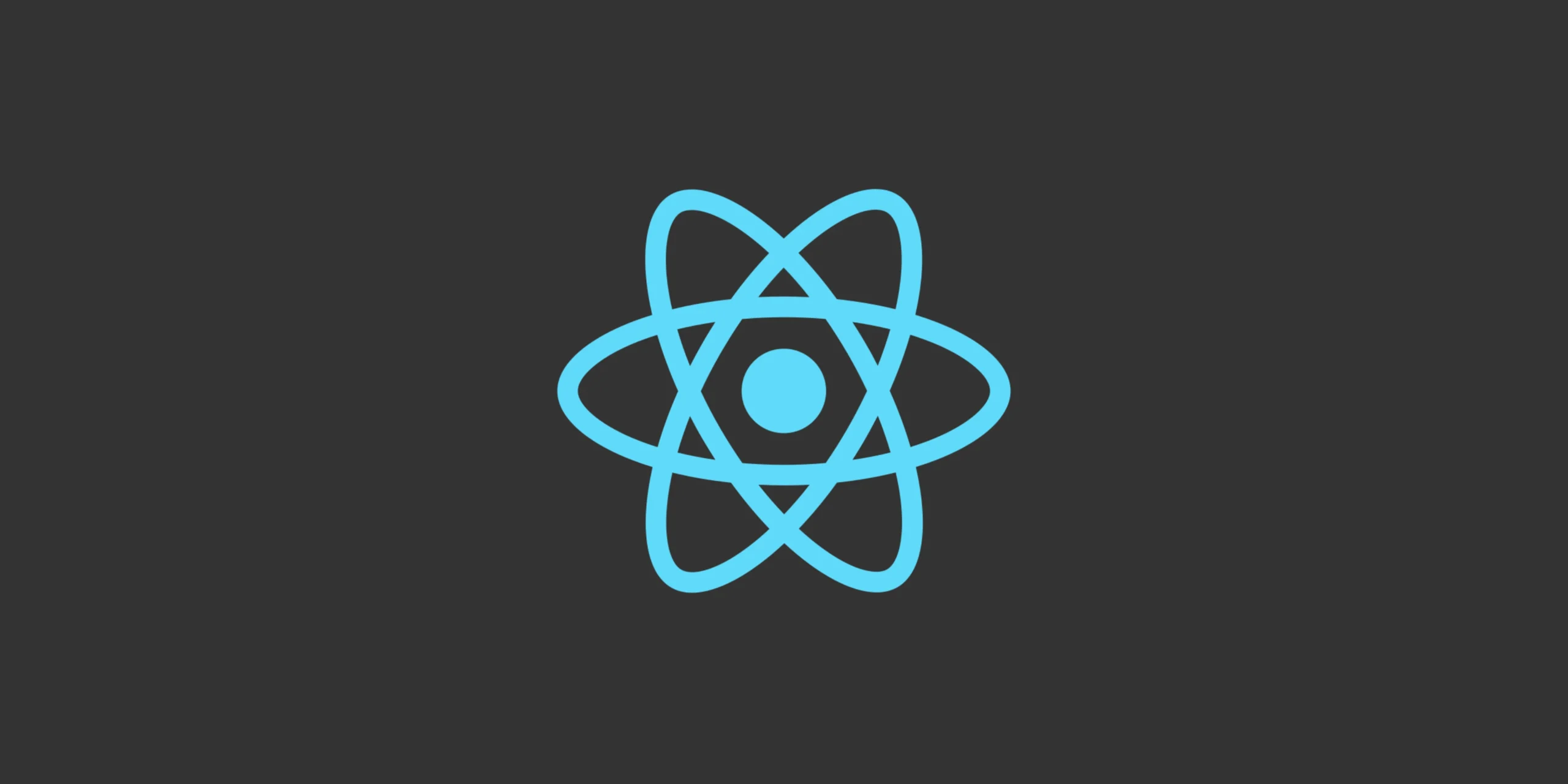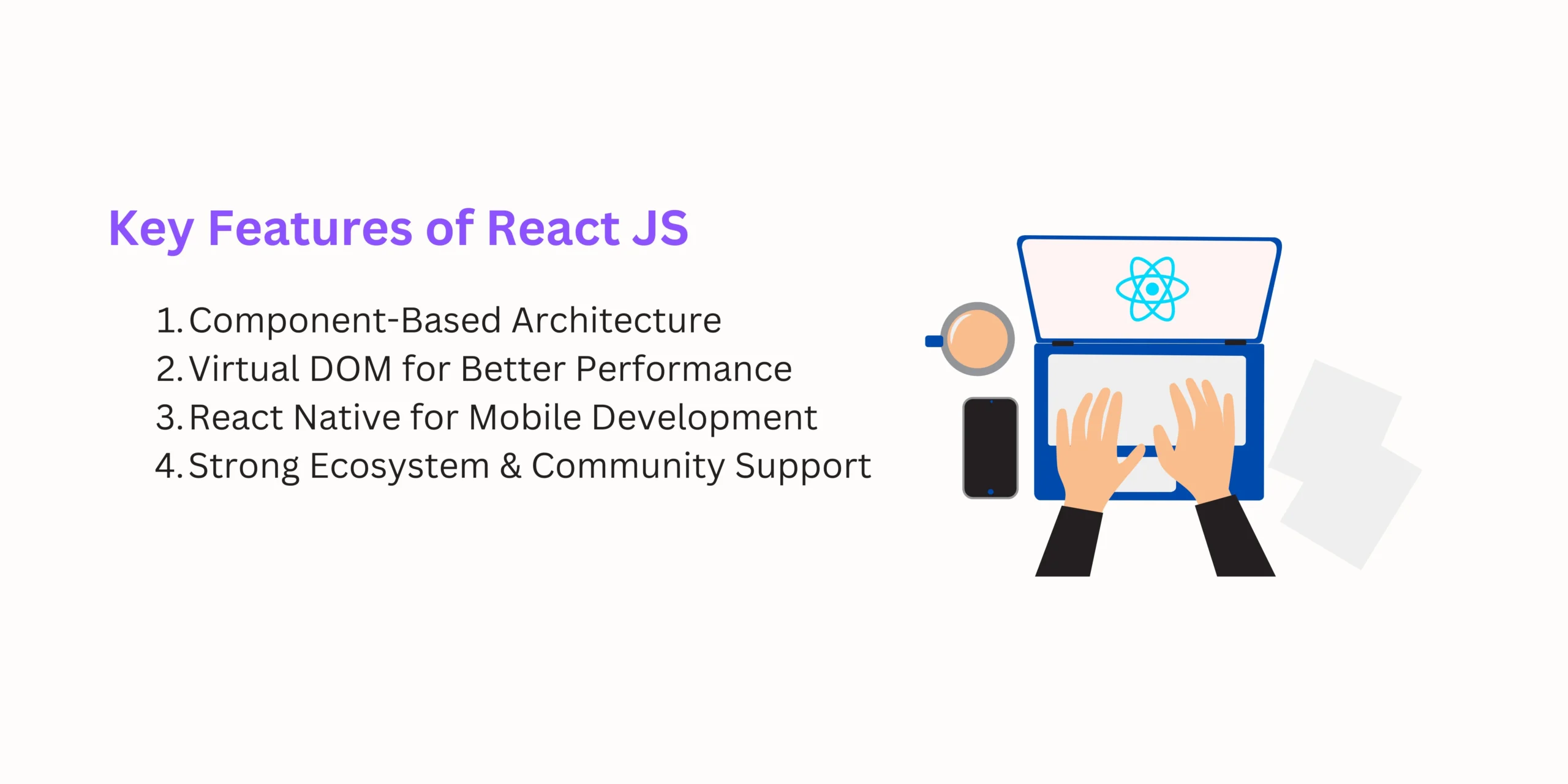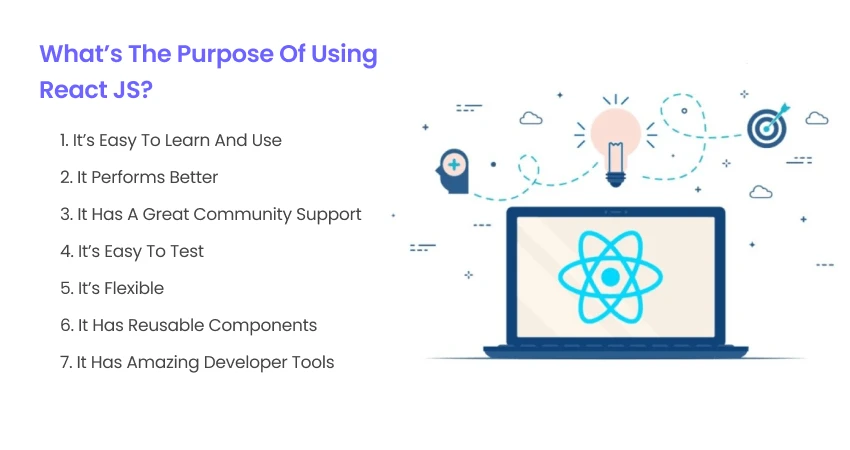Mobile and web application users are increasing tremendously. Most companies use these robust technologies for developing mobile applications and experiencing a flawless and seamless user experience.
React JS is one of the robust technologies that are highly popular and in demand for web app development.
React JS is an open-source library used for mobile and web development. It enables developers to build reliable, fast, and scalable web applications. It works on the UI in the application and enables the creation of reusable UI components.
You can hire ReactJS developers to use it along with other frameworks or JavaScript libraries, which include Angular JS.
React JS, often simply referred to as React, is an open-source JavaScript library primarily used for building user interfaces. It was first introduced by Facebook in 2013 and has since gained immense popularity among developers worldwide. React allows developers to create dynamic and interactive web applications with ease, making it a fundamental tool in modern web development.
Read More: Difference Between ReactJS and React Native
What is React JS?

React.js, commonly known as React, was developed by Facebook (now Meta) in 2013. Its virtual DOM and component-based architecture changed front-end development by allowing fast and dynamic UI updates. React has transformed greatly over the years, with constant updates and improvements making it a top choice for developers all over the world.
Key Features of React JS

- Component-Based Architecture: React encourages developers to break down the UI into reusable components, making code modular and maintainable.
- Virtual DOM for Better Performance: The Virtual DOM minimizes direct manipulation of the actual DOM, resulting in faster rendering.
- React Native for Mobile Development: The ability to build mobile applications using React.js has expanded its reach beyond web development.
- Strong Ecosystem & Community Support: A vibrant community and a vast ecosystem of libraries and tools support React.js development.
React JS vs. Other Front-End Frameworks
To gain a comprehensive understanding of React.js, it’s essential to compare it with its competitors. Notable alternatives to React.js include Angular, Vue.js, and Ember.js.
| Feature | React.js | Angular | Vue.js | Ember.js |
| Type | Library (focused on UI) | Full-fledged framework | Progressive framework | Full-fledged framework |
| Learning Curve | Moderate (JSX syntax) | Steep (TypeScript, complex) | Easiest among all | Steep (Convention over config) |
| Performance | Fast (Virtual DOM) | Good but heavy due to two-way binding | Fast with small app sizes | Slower than React, optimized for large apps |
| Community & Adoption | Large, backed by Meta | Large, backed by Google | Growing | Smaller but dedicated |
| Flexibility | Highly flexible, integrates easily | Strict structure,
less flexible |
Flexible with a simple core | Less flexible |
| Best for | SPAs, dynamic UI, scalable apps | Enterprise-level apps, large projects | Lightweight SPAs, quick MVPs | Complex, large-scale applications |
React.js vs. Angular
- React is a library, while Angular is a full-fledged framework.
- React’s learning curve is generally considered lower than that of Angular.
- React’s virtual DOM offers better performance in certain scenarios.
React.js vs. Vue.js
- Both React and Vue are component-based.
- Vue offers a more gradual learning curve for beginners.
- React has a larger community and a more extensive ecosystem.
React.js vs. Ember.js
- React focuses on the view layer, whereas Ember is a full-stack framework.
- Ember follows a strong convention-over-configuration approach.
- React provides more flexibility in choosing additional libraries and tools.
Rise of React JS
React.js quickly gained traction in the developer community and found its way into various high-profile projects and companies. Its adoption by Instagram, WhatsApp, Airbnb, and Netflix showcased its versatility and scalability.
If you’re wondering why it is popular, then dive into this article to know the purpose of using React JS:
Why Use React JS?
The main question that arises is when you have an array of open-source platforms, then why should you choose ReactJS over other platforms? If you want to know why React JS stands out amongst all the front-end frameworks, then here are the benefits of using React JS:

1. Easy to Learn and Use
ReactJS is quite simple and easy to use. You can easily build any professional website with it as it uses less coding and provides high functionality. It’s built on syntax called JSX. Its usability and applications set it apart as JSX syntax is easy to code and use.
Also, it can be learned by anyone with a basic programming language. You just need to have a fundamental understanding of programming languages such as HTML and CSS.
2. Enhanced Performance
You can easily develop websites quite fast as they use virtual DOM. The benefit of a virtual DOM is that it only updates the components that have changed instead of updating all of them.
Earlier, JavaScript was fast, but due to the update of the DOM, it became slow. Most libraries used to update them inefficiently, which resulted in changes in specific pages of the web.
Instead of updating all the components, the React team found an efficient way of updating the components’ existing state changes. Initially, React would monitor each component and find significant changes. If the component state has changed, it would compare the changed state with what the new DOM will look like. Then it would find an efficient way to update the components.
This might sound complicated, but ReactJS does it effectively.
Also, most people use applications on their mobile devices, so it saves the battery.
Moreover, React JS is speedy as it automatically changes the state when the data gets updated as it’s stored in the memory.
3. Strong Community Support
ReactJS has become quite popular and, due to its growing popularity and demand, it has attracted a massive community and has become one of the top repositories on GitHub.
In fact, according to a Stackshare report, more than 9,000 companies use React for front-end web development.
You would be amazed to know there’s a community specifically for React JS called React Flux. It has over 1,10,000 members who actively share and discuss their reactions to the problems.
4. Easy to Test
ReactJS is user-friendly and easy to test. Generally, UI browser testing is quite a hassle as it becomes difficult to set up, while ReactJS requires less configuration for testing.
Also, you can easily test React’s components as it uses the node command line. The node command line works fast.
Unlike traditional UI browsers, which consume a lot of time, ReactJS can be written fast with tools such as enzymes and jest. This makes testing quickly and efficiently.
5. Flexible
What makes ReactJS more flexible than other libraries is that it is easy to use and can be used on various platforms for creating better user interfaces. You just have to learn it once, and then you’ll be good to go.
React was specifically created to make components for web applications. Since its popularity is growing tremendously, its ecosystem has grown massively to cover cases.
You can easily create static websites with ReactJS and develop applications with React Native.
The silver lining is that it can be used for more than just developing new applications. You can use it in existing applications as well.
If you change a small part of the application, and if the changes work, then you can easily convert the entire application into React JS. Isn’t it amazing?
6. Reusable Components
React has a component structure. It all starts with building buttons, checkboxes, dropdowns, etc. Once you start with these tiny components, they start creating wrapper components. Here, each component has its logic and can decide how it has to be rendered. What makes it stand out is that you can easily reuse the components.
The reusable feature makes it consistent and easy to develop the app and grow the code base.
7. Built-in Developer Tools
Undeniably, React JS has amazing developer tools such as redux developer tools and react developer tools. You can easily install and add them into your Chrome extensions.
You can use the React developer tools for inspecting the components and for observing the current props and states, while if you are using the redux library then you can dispatch actions, current or modify stores, and can also see the changes in stores.
Interestingly, you can time travel as well as updates that would be done within the extension. Also, to debug, you can go to any state of the application and record it.
How to Get Started with React JS: A Full Guide
1. Setting Up Your React Environment
Before you can start using React, you need to set up your development environment. Follow these steps to get started:
Step 1: Install Node.js and npm
React relies on Node.js and npm (Node Package Manager) for package management. Download and install Node.js from the official website, which includes npm.
Step 2: Create a New React Application
You can create a new React application using the “Create React App” command-line tool. Run the following command:
npx create-react-app my-react-app
Step 3: Start the Development Server
Navigate to your project directory and start the development server by running:
cd my-react-app
npm start
2. Creating Your First React Component
React applications are built using components. A component is a reusable, self-contained piece of UI. Here’s how you can create your first React component:
Step 1: Create a New Component File
Inside your project directory, create a new file with a “.js” extension, e.g., “MyComponent.js.”
Step 2: Define Your Component
In “MyComponent.js,” define your component using React syntax. For example:
import React from 'react';
function MyComponent() {
return <div>Hello, React!</div>;
}
export default MyComponent;
Step 3: Use Your Component
You can now use your component in other parts of your application. Import it and include it in your JSX code.
3. Understanding State and Props
In React, state and props are essential concepts for building dynamic and interactive components.
State: State represents the data that a component can maintain and modify. To use state in a component, you can declare it using the useState hook or in a class-based component’s constructor.
Props: Props (short for properties) are used to pass data from parent to child components. They are read-only and help in creating reusable and configurable components.
4. Managing React Component Lifecycle
React components go through a lifecycle, and you can hook into various lifecycle events to perform actions. Some common lifecycle methods include componentDidMount, componentDidUpdate, and componentWillUnmount. These methods allow you to manage side effects, data fetching, and cleanup.
5. Styling React Components
Styling is a crucial aspect of web development. You can style your React components using CSS, CSS-in-JS libraries, or preprocessors like SASS. Consider using libraries like Styled-components for a more organized approach to styling in React.
6. Routing in React Applications
Routing is essential for building multi-page web applications. React Router is a popular library for handling routing in React applications. You can define routes, and nested routes, and pass parameters to components using React Router.
7. Handling Forms and User Input
Forms are used to collect user input in web applications. React provides controlled components, which allow you to manage form elements’ state and behavior. You can use controlled components to validate and submit user data effectively.
8. State Management with Redux
As your React application grows, managing the state can become challenging. Redux is a state management library that helps you centralize and manage application state. It provides a predictable and maintainable way to handle data across components.
9. Testing in React
Testing is a crucial part of the development process. React applications can be tested using various libraries and tools, such as Jest and React Testing Library. Writing tests ensure the reliability and stability of your application.
10. SEO Best Practices for React Apps
Optimizing your React application for search engines is vital for visibility and traffic. Ensure that your app has proper meta tags, including title and description. Use server-side rendering (SSR) or static site generation (SSG) to improve SEO.
Read More: React for Enterprise Applications: Why Use React For Large Scale Business

Conclusion
React JS remains a top choice for developers in 2025 due to its performance, flexibility, and ease of use. It’s great for projects that require component reusability, interactive user experience, and excellent animations.
It features a powerful user interface library that works well for any company, large or small. As a result, the organization is significantly reliant on React JS.
With this purpose, we hope you have understood why companies are so obsessed with React JS!
Looking to Hire a React.js Developer?
If you want to hire remote Reactjs developers for your next project, GraffersID can help you provide top developers in India to build high-performing applications. Contact us today!




